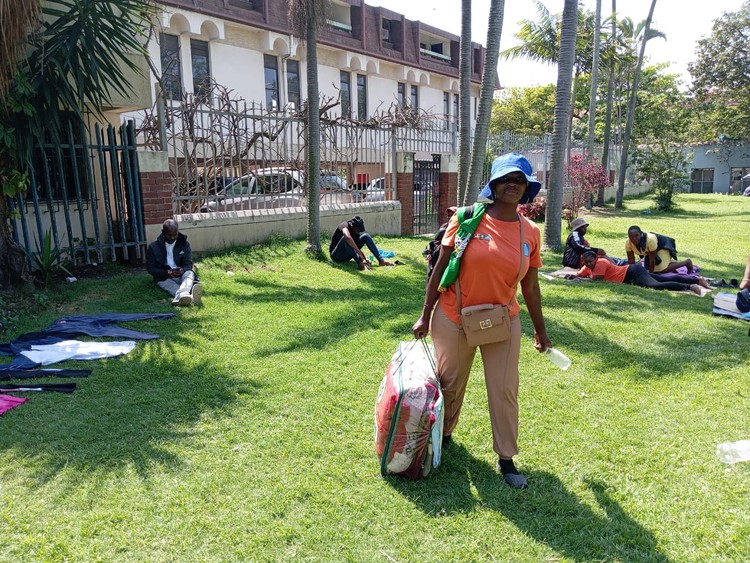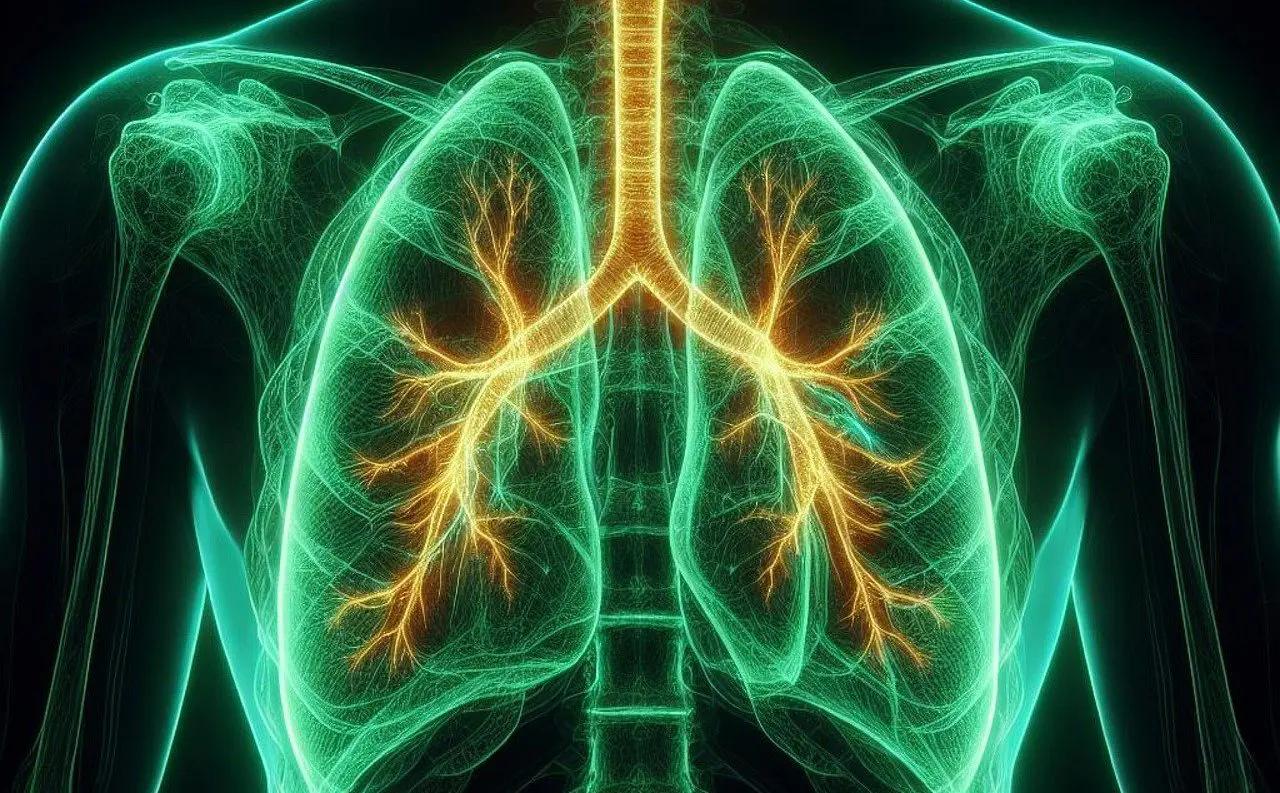A system of ropes and pulleys has been set up to rescue zama zamas trapped deep underground in Stilfontein, North West Province. Photo: Ihsaan Haffejee
On Friday 15 November, as news spread that hundreds, if not thousands, of illegal miners were stuck underground without food in Stilfontein, police minister Senzo Mchunu arrived in a blue-light brigade.
A convoy of government officials, activists, community members and journalists sped from the town’s police station towards the abandoned mine where the zama zamas had been digging for gold before their supplies were cut off in a sweeping clampdown dubbed Vala Umgodi.
The men were deeper than 1.5km below the surface, near the bottom of an old mine shaft that stopped operating more than two decades ago. Six weeks had passed since any food had been allowed to reach them.
The police station lies opposite the ruins of a recreational club for white mineworkers, now overgrown with shrubbery. Stilfontein was once a prosperous settlement, but the closure of many of its mines left a hole in the economy. Beyond the edge of the town, the convoy passed a series of flattened mining compounds where zama zamas dig by hand for leftover gold, creating shallow pits in the earth. Some desolate shacks had sprung up alongside these diggings and children stood outside, watching the cars stream by.
Further along the road, men in gumboots were looking for gold on a mound of rocks left behind by the mines. They were ignored by the police. In every direction across the landscape rose ghostly white mine dumps.
The turnoff to the abandoned shaft was flanked by an avenue of trees planted when the mine still operated. Its buildings had since been demolished, including the towering headgear used for hoisting mineworkers and ore to the surface. The entrance to the shaft had been sealed off, along with an adjacent ventilation shaft for pumping fresh air underground, but in 2019 zama zamas blew these open to access the deep tunnels beneath.
The cars parked and a few hundred people hurried down a dirt track to where the minister was being shown the site. The crowd gathered at the old ventilation shaft, a hole in the ground surrounded by heaps of rubble. People had scrambled up the sides of this uneven slope and were peering over the edge into a black cylinder of concrete that dropped for two kilometres straight.
There was no barrier, only Special Task Force policemen in masks who intermittently pushed people back. If anyone fell it would have taken more than 20 seconds for them to hit the bottom.
An official from the Department of Defence, dressed in a smart black suit, looked at the shaft and muttered, “They wanted us to go and rescue these guys, but it’s impossible.”
A mass of tangled, broken rope, formerly used for lowering zama zamas and food underground, hung over the edge. Suspended over the hole was a heavy orange pulley. A rope of nylon webbing, long enough to reach the trapped miners, looped over the pulley and dropped into the darkness.
The police minister was surrounded by a scrum of cameras. He was led toward the rim of the shaft, his entourage adopting the ginger movements of people on a precipice. A few minutes later the minister departed, followed by most of the crowd.
Perched on the rubble around the mine were about 50 young men, many of them wearing facemasks or balaclavas. As the area emptied they stood up and gathered near the rope.
Men involved in a rescue operation wait near the mineshaft. Photo: Ihsaan Haffejee
Earlier that week, the police had granted them permission to conduct an informal rescue operation. Some food had been lowered into the shaft and at least six people had been pulled out, along with one dead body. Police have not yet released further information about the death.
Now a man leaned over the edge and bellowed down the shaft, his voice reverberating for a long time. The wind was blowing and its echo rumbled in the shaft. The man yelled again, listening for an answer.
At his signal, the waiting men took the rope and started pulling, marching away from the shaft and peeling one by one off to rejoin the front of the line. Someone was harnessed far below, dangling below a distant glimmer of light.
“You’re just hanging in the dark, waiting for the rope to break,” a zama zama who has been lifted in and out of abandoned mines in Stilfontein told GroundUp. “It’s like you’re already dead.”
Police chased the remaining reporters away from the shaft before the rescue team brought the next man to the surface. “Don’t burn bridges,” a brigadier in charge of the operation warned, when questioned about this.
Top left: Google Earth image of the mine in 2004. Bottom left: Google Earth image of the mine in April 2024. Right: Ihsaan Haffejee’s photo of approximately the same area taken this week.
The men returned the next day to continue. They were made to sign indemnity forms before being led past a line of police tape where journalists and film crews had gathered, forbidden from crossing.
At around noon, in sweltering heat, the first zama zama was pulled out. He wore gumboots, a bright yellow rain suit and a balaclava. His safety harness was messily knotted and it took a while to untie him. He was dehydrated and very weak. He was lowered to the ground and someone tugged off his rain suit, followed by the balaclava. He had a round, youthful face and a dazed expression. His eyes flicked from side to side, watching the people around him. The sun beat down as he sprawled in the dirt.
Soaked in sweat, the men who had been working the rope went to rest in scraps of shade cast by shrubs growing in the rubble. Others huddled beneath a bulk carrier bag that had been used to deliver packs of instant porridge to the stranded miners a few days prior.
The police have argued that the zama zamas entered the mines willingly and therefore are not trapped. In the past few weeks, more than a thousand illegal miners have surfaced via the elevator of an operational shaft in Stilfontein, but not all areas of the tunnel network connect there. Illegal miners have a system for bringing men up from abandoned shafts, but rescuing hundreds at once is a formidable task.
As the rescued man lay in the heat, his fingers and feet began twitching. There were no paramedics at the shaft; there wasn’t even water. Activists and community leaders who had been observing the rescue shouted at the police until an ambulance arrived.
After being placed on a stretcher, the man was carefully searched for gold. He had a tube of toothpaste in one pocket that the police emptied and smeared on the ground, waving a metal detector over it. Then the sirens blared and he was driven away.
The next man who came up had a gaping head wound from being struck over the head by a rock in a fight over food. One of his shoulders appeared to be dislocated. He was crying.
Three more zama zamas came up that day. The last man was in the worst condition, emaciated and shaking. He had gone without ARV medication for weeks, he said, and had been living underground for more than two years.
This is part two of a series. Read part one: Stilfontein’s dangerous and desperate illegal mining industry.
Kimon de Greef is writing a book on zama zamas.






